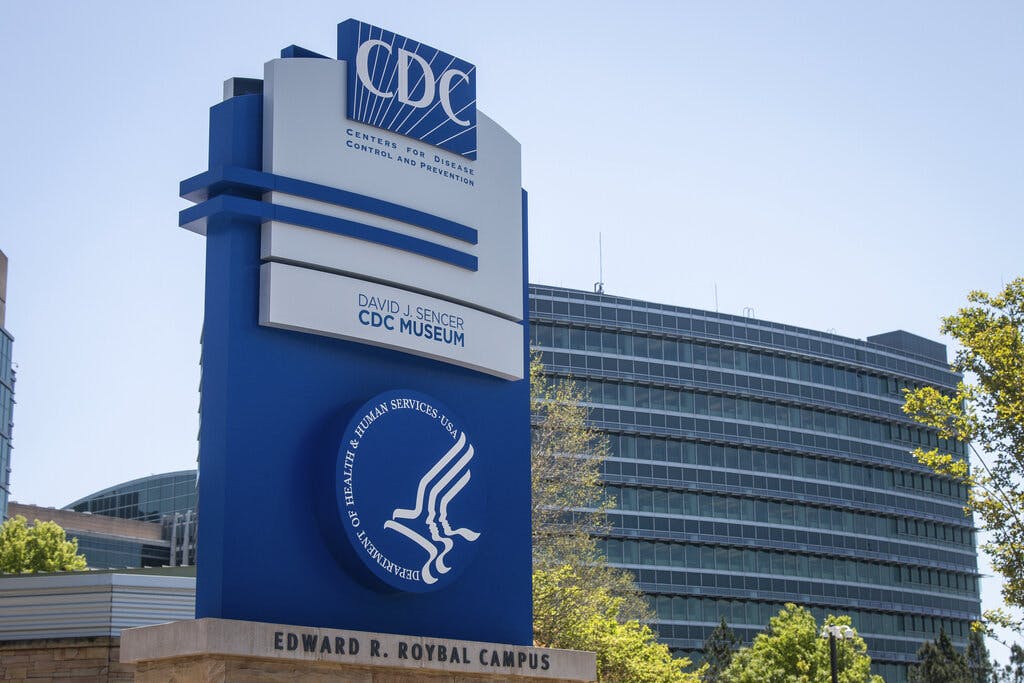The CDC Needs a Trump Makeover as the Health Agency Allows Deadly Fungus To Spread
The agency needs to prioritize health over political correctness, opt for transparency over secrecy, and be open to 21st-century technologies.

A deadly fungus is spreading like crazy across America, sickening and killing hospital patients, and the federal response has been ineffectual at best.
It’s in half the states, including New York, with soaring annual increases in the number of patients sickened, per the American Journal of Infection Control.
The Centers for Disease Control and Prevention calls Candida auris an “urgent” threat, but talk is cheap. The agency is largely to blame for its rapid spread. It’s a textbook example of a federal agency crying out for a Trump makeover.
Between 30 and 60 percent of patients who develop invasive C. auris infection die. To put that in perspective, just more than 1 percent of Covid patients die.
In 2024, the CDC reported 4,514 cases in patients of all ages — nine times the size of the measles outbreak that is attracting significant public attention.
Lefties are moaning that the Trump administration’s 2,400 staff cuts at the CDC imperil our health. Nonsense. The agency — more fittingly called the Centers for Disaster and Confusion — is falling short at its core mission: stopping the spread of contagious diseases.
Here’s your to-do list, Mr. Health and Human Services Secretary: Prioritize health over political correctness, opt for transparency over secrecy, and be open to 21st-century technologies.
1. End the Wokeness
In 2021, while C. auris cases soared 500 percent, the CDC was busy tutoring health care laborers on avoiding gender-specific terms like “mother” and “father” and stigmatizing words like “smoker” or “prisoner.” Ridiculous. Cutting word police staff won’t harm our health a bit. Start there, Mr. Secretary.
2. Provide Transparency
Republicans talk about price transparency. That’s not enough. As the president and chief executive of The Leapfrog Group, Leah Binder, says, “Bad care is a bad deal at any price.”
Once C. auris invades a hospital, it clings to furniture, ceiling tiles, curtains, mattresses, and equipment such as blood pressure monitors and wheelchairs.
When patients are exposed to the fungus, it attaches to their skin, and it’s virtually impossible to get rid of it. A small number develop life-threatening infections, but many more indefinitely become carriers. If they’re later admitted to another hospital, they shed the fungus there, unknowingly spreading the problem.
You don’t want to be treated in a hospital struggling with this contagious fungus.
Yet the CDC hides which hospitals have it, protecting the hospital’s reputation instead of keeping the public informed and stopping the spread.
When the fungus invaded a Las Vegas hospital’s neonatal intensive care unit because contaminated echocardiogram equipment was used on the babies, a newborn died. The CDC report referred to the hospital as “Hospital A.” If you’re about to give birth, you’d want to know whether the hospital you’re planning to use is battling C. auris.
Referring to “Hospital A” isn’t the exception. The CDC never identifies hospitals or nursing facilities battling any type of infection. That’s unfair to the public.
3. Join the 21st Century
The CDC puts out guidance for hospitals on how to clean — but it’s straight out of the 1950s. It recommends using Environmental Protection Agency-approved detergents, which are known to be ineffective against C. auris, and talks about changing water in buckets and laundering mopheads. No mention of technologies that can continuously and non-toxically decontaminate rooms.
These effective technologies, proven in peer-reviewed medical journals, the gold standard, can rid hospital rooms of C. auris. Dry hydrogen peroxide emitted through the HVAC system reduced C. auris contamination in a burn unit in a Florida hospital by 93 percent, according to a study in Open Forum Infectious Diseases.
Another study published in Antimicrobial Stewardship & Healthcare Epidemiology showed that a Las Vegas hospital reduced C. auris contamination on surfaces to just 16.7 percent from 70 percent, reducing the risk that patients will pick it up.
Far ultraviolet light can also destroy hospital infection germs without posing any risk to human skin and eyes, according to data published in Infection Control Today.
Yet the CDC is suspicious of solutions coming from the for-profit world, and the agency’s website and guides for hospitals reflect little awareness of what is technically possible.
No one has suffered more from this backward thinking than the nation’s schoolchildren. During Covid, numerous technologies could have been employed to get schools up and running relatively virus-free. Yet instead, the CDC gave school administrators wacky advice to open the windows and keep desks 6 feet apart.
The public deserves a CDC that can provide up-to-date scientific guidance.
Mr. Secretary, this is your roadmap. The CDC has hundreds of projects that have nothing to do with stopping infectious disease. Slash them and fortify the CDC to battle deadly contagions. Our lives could depend on it.
Creators.com

